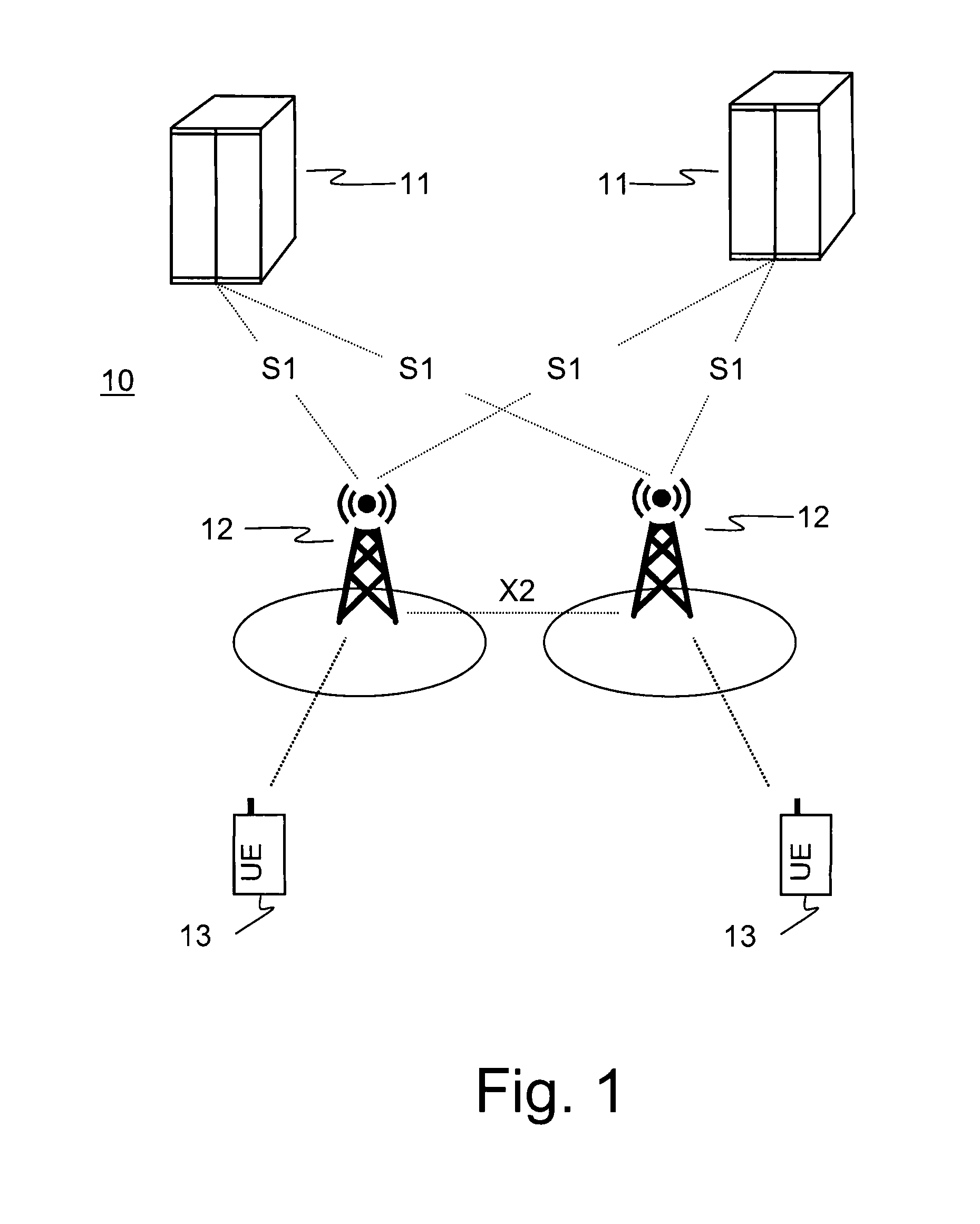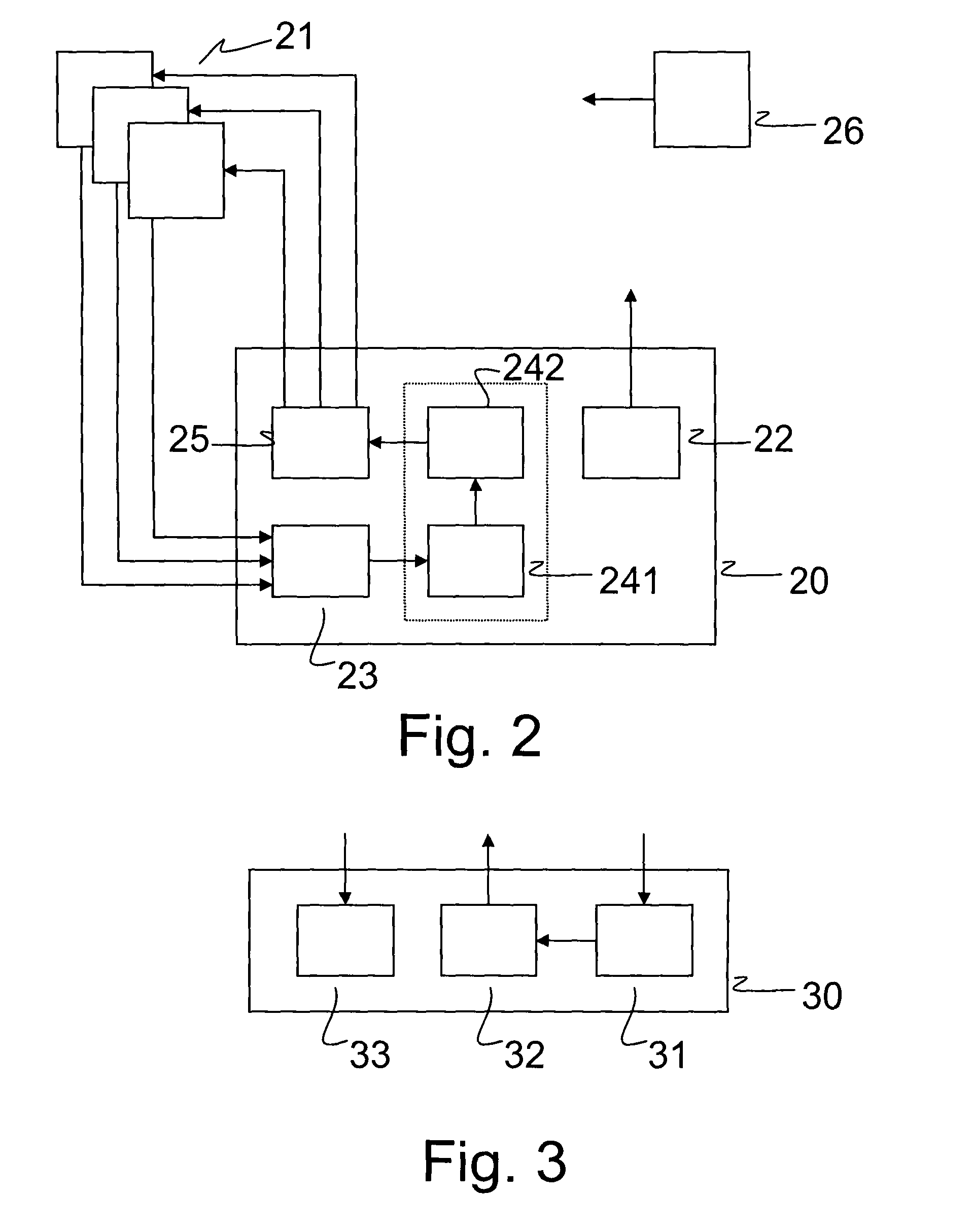Coordinated node b radio resource management measurements
a radio resource management and coordination node technology, applied in the field of coordinated radio base station measurement methods and arrangements, can solve the problems of inability to control parameters, a large complexity, and is expected to be more problematic for distributed open network architectures, so as to reduce the resource consumption of measurement handling and increase security. the effect of reducing the resource consumption of measurement and reducing the resource consumption of radio base station measurements
- Summary
- Abstract
- Description
- Claims
- Application Information
AI Technical Summary
Benefits of technology
Problems solved by technology
Method used
Image
Examples
Embodiment Construction
[0016]FIG. 1 illustrates an evolved UMTS Radio Access Network (E-UTRAN) 10 consisting of a plurality E-UTRAN Node Bs (eNBs) 12, i.e. the radio base stations in an evolved UTRAN, providing the evolved UTRA U-plane and C-plane protocol terminations towards the user equipments (UE) 13. The eNBs 12 are interconnected with each other by means of the X2 interface. The eNBs 12 are also connected by means of the S1 interface to the Evolved Packet Core (EPC), here represented by mobility management entities (MME) 11. The S1 interface support a many-to-many relation between Access Gateways (aGW) and E-UTRAN Node Bs.
[0017]In a centralized network architecture, there is only one controller unit, normally the radio network controller, that requests measurements from a particular radio base station. In a distributed architecture as depicted in FIG. 1, however, there are several controllers 11 for RRM functions that need access to principally similar measurements from a particular radio base stati...
PUM
 Login to View More
Login to View More Abstract
Description
Claims
Application Information
 Login to View More
Login to View More - R&D
- Intellectual Property
- Life Sciences
- Materials
- Tech Scout
- Unparalleled Data Quality
- Higher Quality Content
- 60% Fewer Hallucinations
Browse by: Latest US Patents, China's latest patents, Technical Efficacy Thesaurus, Application Domain, Technology Topic, Popular Technical Reports.
© 2025 PatSnap. All rights reserved.Legal|Privacy policy|Modern Slavery Act Transparency Statement|Sitemap|About US| Contact US: help@patsnap.com



